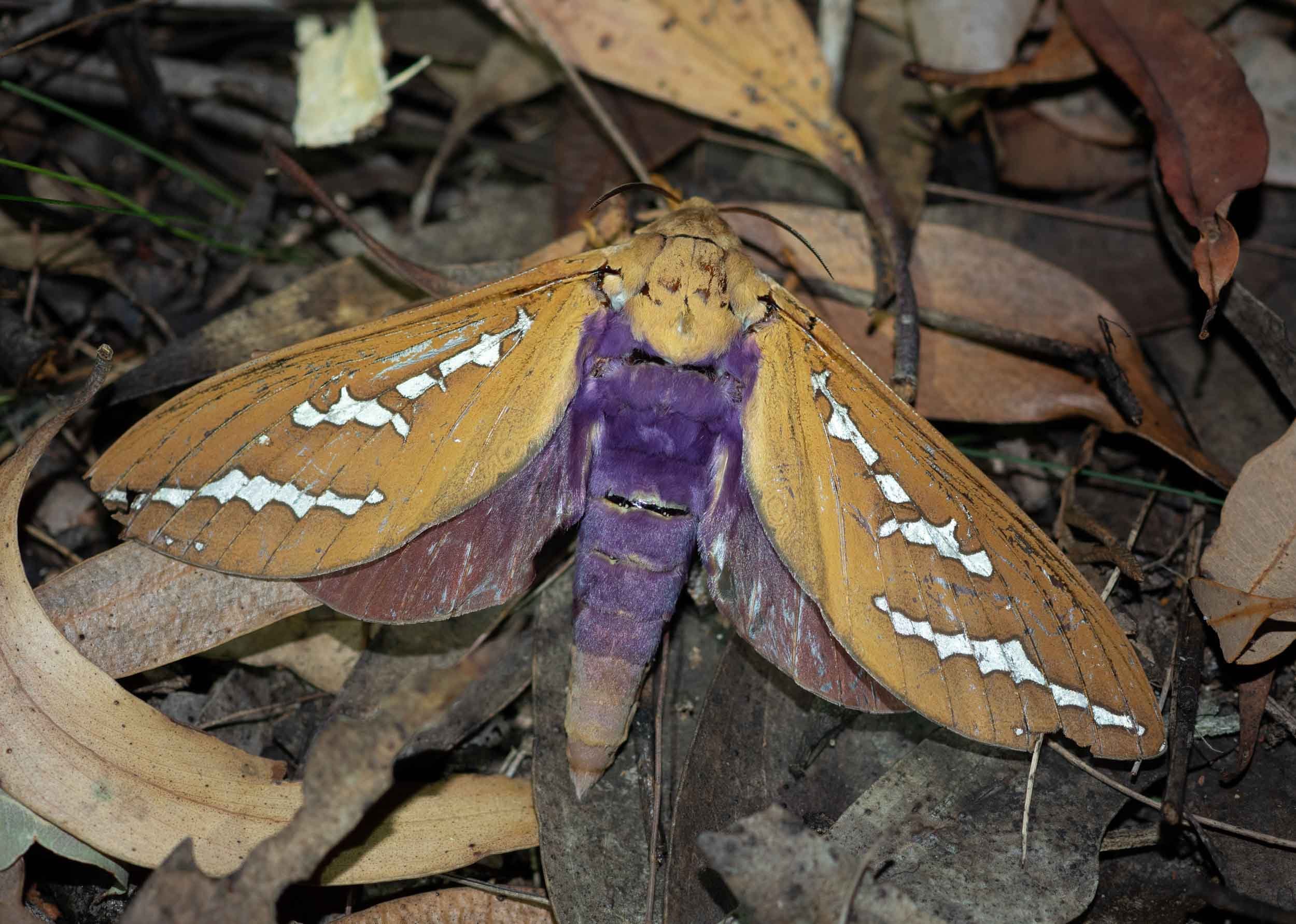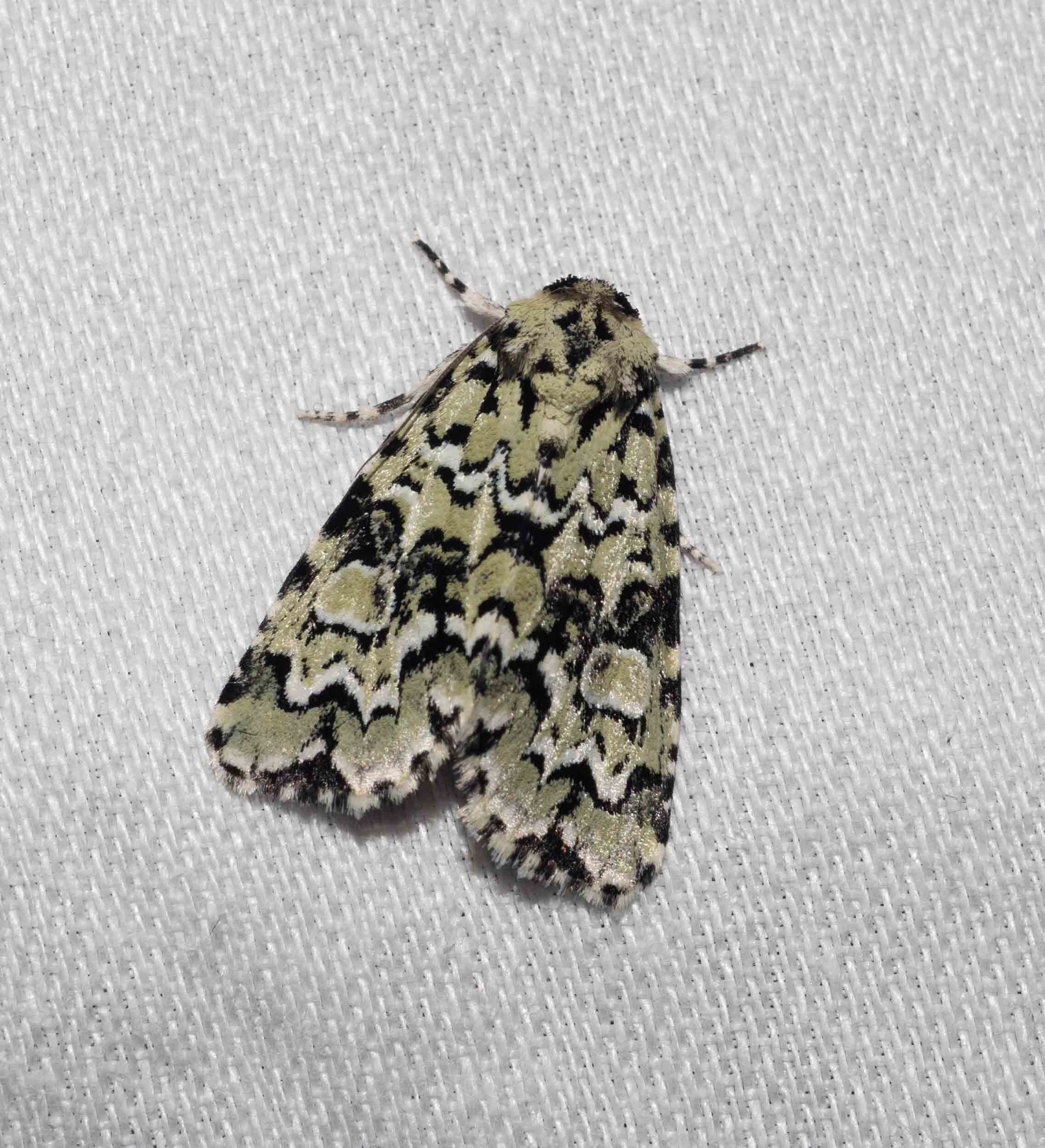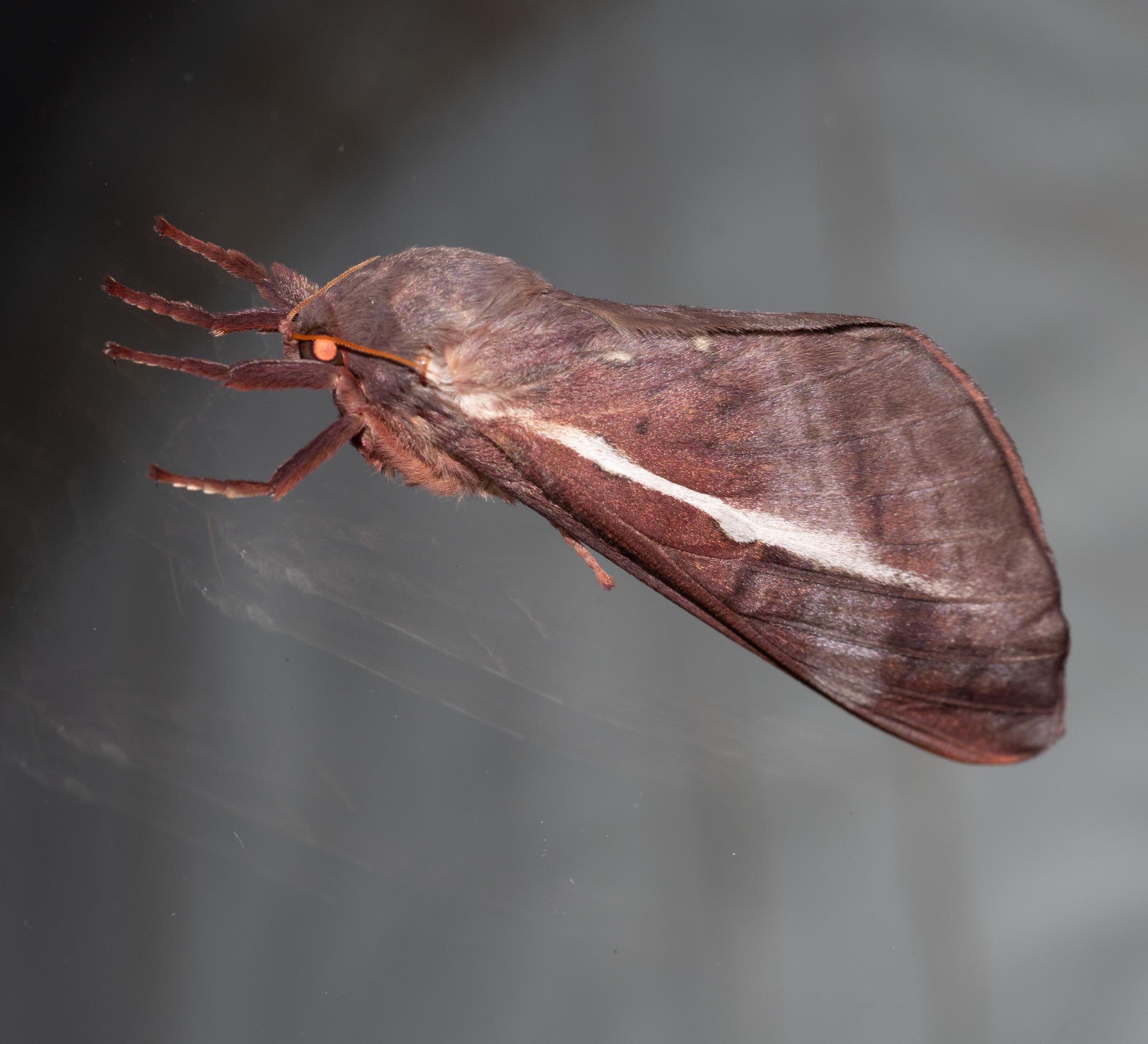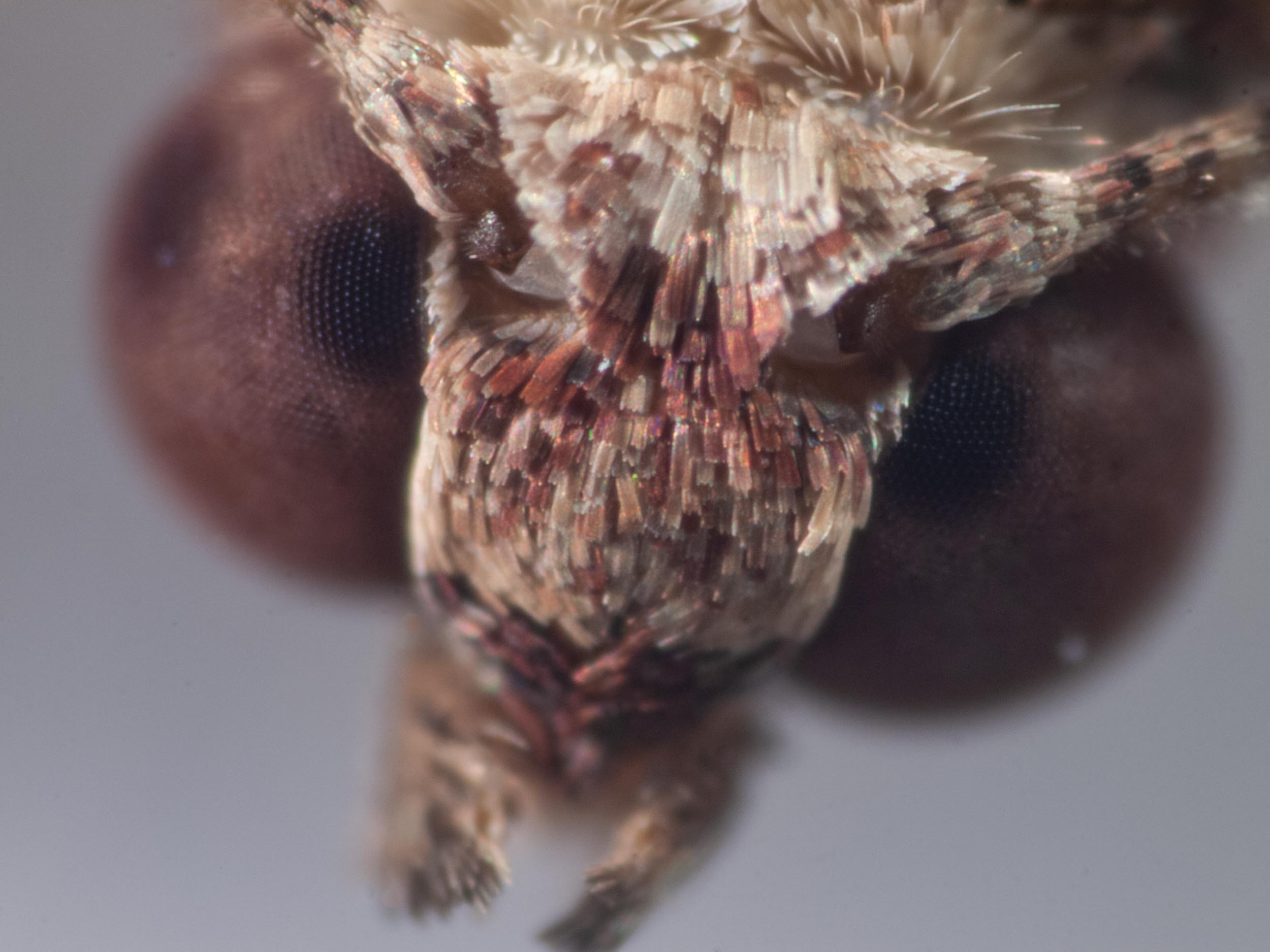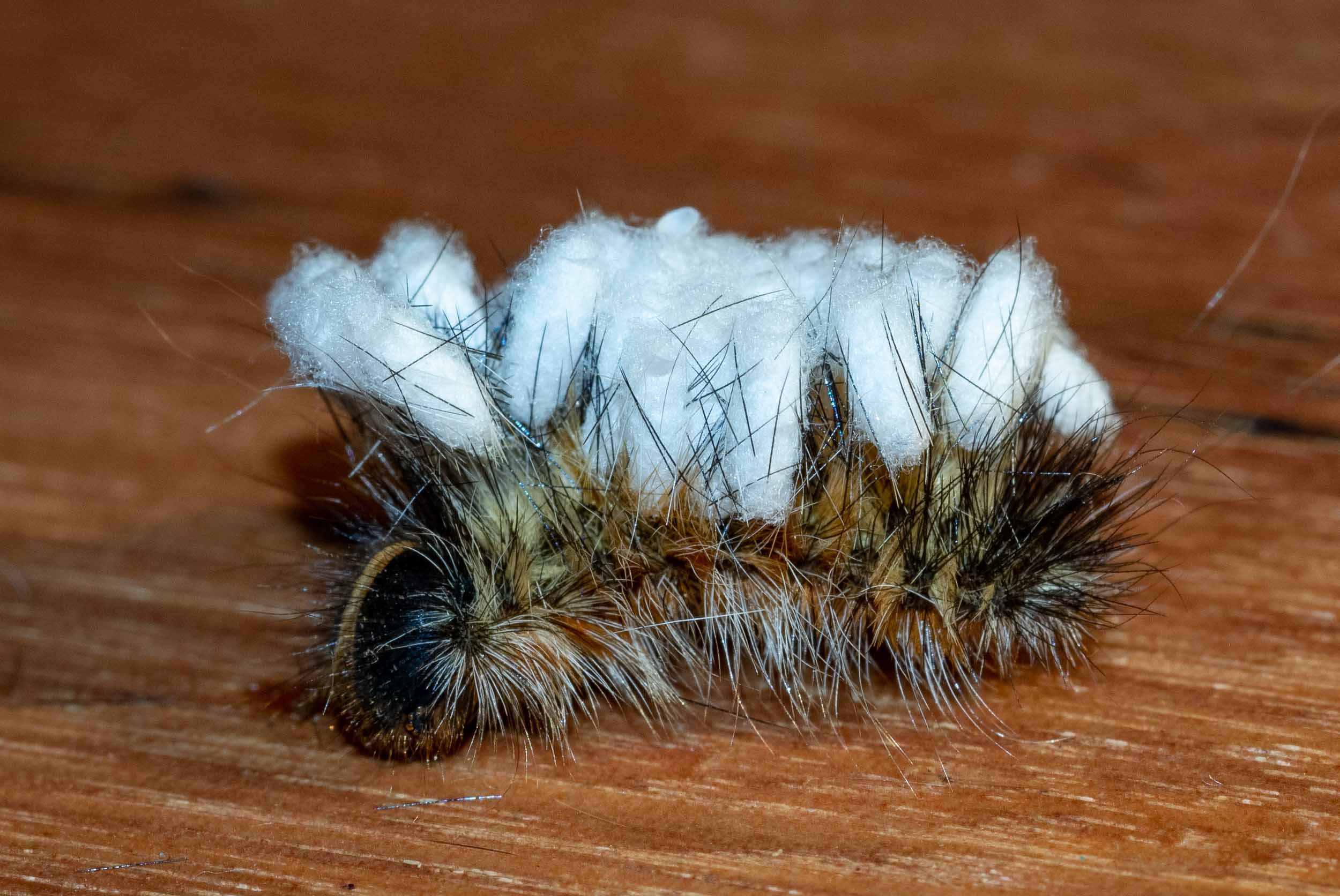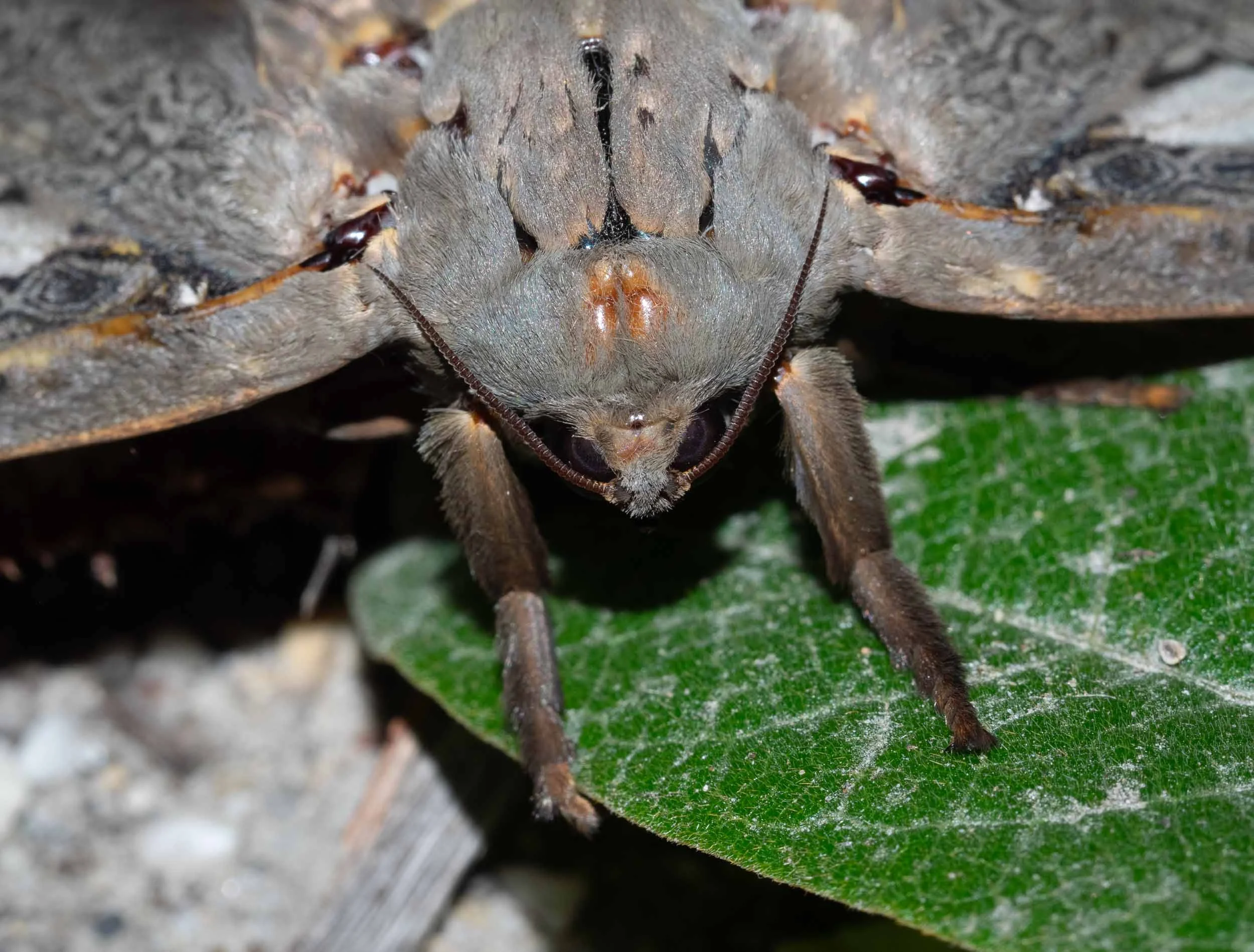A hidden life
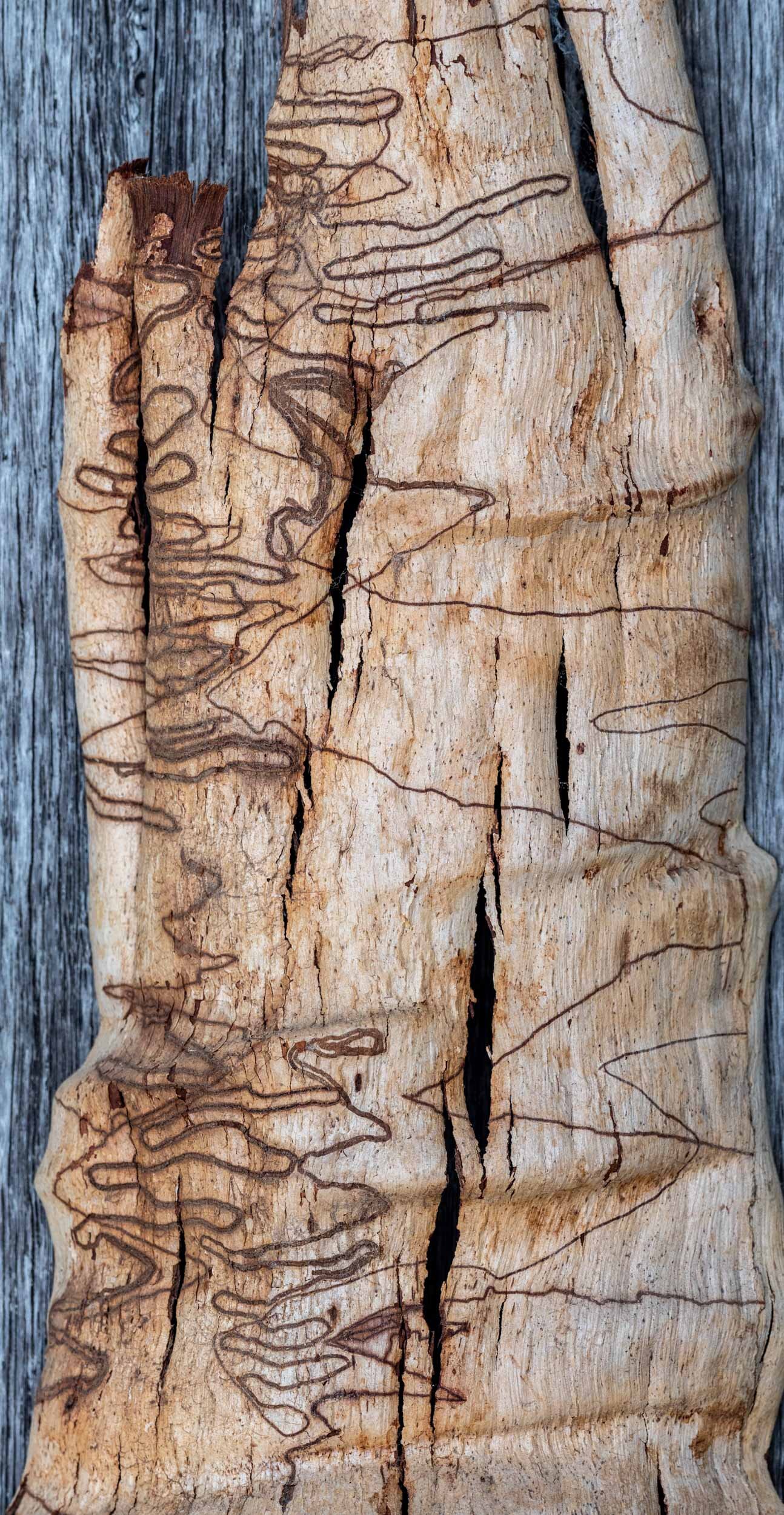
Many insects spend the formative phase of their life in a hidden place - buried underground or in a tunnel in a tree trunk or branch - and first reveal themselves when they emerge as an adult. Here’s a nice variation on this theme involving an iconic Australian object, scribbly gum bark.
We collected a piece of scribbly bark in some forgotten place along our travels. It’s a prized item in the biological shrine on our bookshelves.
So what is the creature that makes these intriguing scribbles and how and why does it do it?
It’s been known since 1935 that, at least in some cases, the animal in question is the larva of a moth belonging to the genus Ogmograptis. But how many different species of Ogmograptis are involved, whether all scribbly moths belong to this genus and how Ogmograptis is related to other moths have been unresolved questions until recently.
Exactly how the tracks are created has also remained unclear because the whole process takes place under cover of the tree’s bark. The scribbles only become visible after the bark has been shed and by this stage the larva has transformed into a moth and is long gone.
Answers to many of these questions were forthcoming in a 2012 research paper by Marianne Horak and coworkers (ref. 1), which our moth-guru friend Glenn Cocking kindly brought to my attention recently.
How the scribbles form
Here is my summary, drawn from that paper, of how the larva makes the scribbles. It’s a rather long, complex story with many twists and turns. So bear with me.
I’ve selected a single track on our piece of bark to explain the process.
The story starts at point A, near the top RHS corner of this image. The female moth would have laid an egg in the overlying bark near here. At that time, what you see here as a piece of dead bark was part of the living tree trunk, hidden under the then bark.
After hatching from the egg, the larva chews through that outer bark layer to reach the future cork cambium beneath. The cork cambium is the outermost layer of living plant tissue, just beneath the protective, dead bark layer.
An analogous situation obtains in your skin, where dividing cells in the lower layers generate the dead outer layer of protective epidermis.
The larva then turns tangentially and bores across the cork cambium, feeding on the tissue as it migrates.
It follows an irregular, meandering path, to reach point B.
As it progresses it undergoes a couple of moults and increases in size.
It’s a very simple creature at this stage - just a pale, thin, elongate, legless tube.
The larva makes a sharp turn at B and thereafter follows a regular zig-zag track to point C. The journey from point A to point C probably takes several months - it’s slow going!
Having reached point C, the larva makes a U-turn and retraces its path, either enlarging the original track or closely paralleling it.
It continues to nourish itself by feeding on the cork cambium tissue as it advances to point D.
At point D, the larva moults to the final instar and acquires legs.
It then reverses direction again and heads back in the direction of point C, following the same double track it took on the way down.
But during this stretch of its journey it feeds on something different and more nutritious - callus tissue. This was produced by the tree as a wound response to the original damage inflicted as the larva bored through its cambium.
So the moth larva generates food by eating food - neat trick! It also eats the droppings it produced on its first pass through the cambium. The ultimate in recycling!
Having reached point E, the larva’s journey is almost over. Here it bores to the surface of the bark and descends to the base of the tree. It pupates in the leaf litter on the ground and ultimately emerges as an adult moth to complete the life cycle.
Remember that all of these events take place under the cover of the tree’s bark. The scribbles only become visible after the bark is shed. It took some clever detective work by Horak et al. to reconstruct the larval activity that produces them.
The trick that the moth larva uses of triggering the tree to produce nutritious callus tissue by first feeding on its nutrient-poor cambium is a lovely example of an insect-plant interaction.
Scribbly moth taxonomy
Horak et al also clarified the question of the taxonomic relationship between different scribbly moth species and how they in turn are related to other types of moths.
They examined 4 known scribbly gum moth species. These had been previously placed in four different genera and three different families - a bit of a dog’s breakfast!
Using a combination of morphological features and DNA barcoding they concluded that these scribbly moths all belong to the same genus, Ogmograptis. Along the way, they identified another 10 new Ogmograptis species from previously unidentified moths in collections.
A scribbly gum moth close to home
Horak et al used the same methods to clarify the taxonomic position of another genus of scribbly moths, Tritymba. Their analysis confirmed the close relationship between Tritymba and Ogmograptis suggested in a preceding study (ref. 2), which led to both genera being placed in the same family, Bucculatricidae.
Tritymba is of special interest to me because this moth has turned up in both of the lightsheet surveys we carried out in our forest this year. Glenn Cocking identified these moths, the second one to species level. They’re rather unspectacular in appearance. One might even say drab. Their biology is however anything but dull.
The larva of Tritymba shows a similar behaviour to Ogmograptis in that it mines in the cambium layer of eucalypt trees. It also reenters the last portion of its track and probably dines on the callus produced in this section.
However it burrows in a deeper layer to Ogmograptis - in the vascular cambium rather than the cork cambium. As a result its scribbles only become visible after several years of tree growth have brought that layer to the surface of the bark. Also, one sees only the raised scars in the tree tissue caused by the mining, rather than the tracks themselves. It is said to make ‘ghost scribbles’.
In addition, while Ogmograptis appears to be confined to smooth-barked eucalypts, Tritymba also feeds on rough-barked species.
Several of our home eucalypt species are rough-barked, including White Stringybark Eucalyptus globoidea, Silvertop Ash Eucalyptus sieberi and Rough-barked Angophora Angophora floribunda. As rough-barked eucalypts do not regularly shed their bark, the tracks of Tritymba only become visible if the bark is stripped off the tree.
We can therefore only guess as to which of these are host trees for our Tritymba species. It remains truly hidden.
References
Horak, M., M.F. Day, C. Barlow, E.D. Edwards, Y.N. Su and S.L. Cameron (2012) “Systematics and biology of the iconic Australian scribbly gum moths Ogmograptis Meyrick (Lepidoptera: Bucculatricidae) and their unique insect-plant interaction”. Invertebrate Systematics 26: 357-398
Mutanen, M., N. Wahlberg and L. Kaila (2010) “Comprehensive gene and taxon coverage eludidates radiation patterns in moths and butterflies”. Proceedings Royal Society Biological Sciences B 277: 2839-2848.










